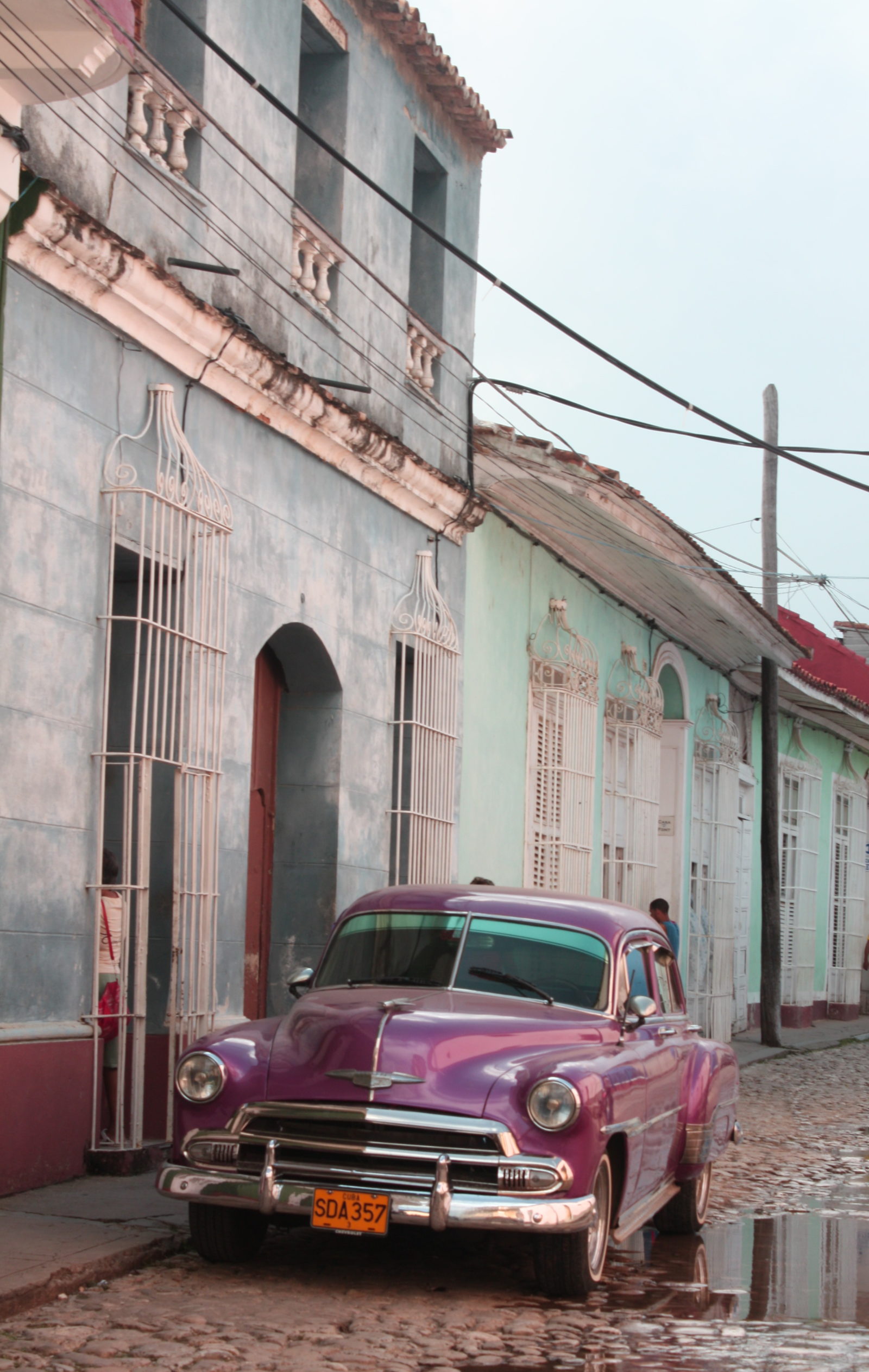Since the Trump administration imposed greater restrictions on travel to Cuba in June, there have been a lot of disappointed travelers, many cancelled cruises and boatloads of confusion around the topic. Those who missed the chance to visit the island nation under the previously popular “people-to-people” category may be surprised to learn there are still ways to travel to Cuba without breaking the law.
There continues to be 12 existing categories under which Americans can travel to Cuba. However, “support for the Cuban people” is now the only one which can be used by the average traveler (the other categories include family visits, journalism, religious travel, etc.).
Traveling to Cuba under this category means you may arrive by plane (cruise ship visits are banned), but must stay in a privately owned home (“casa particulares”) instead of a government-owned hotel, and are required to patronize more local services, e.g., home-cooked meals; intimate walking tours guided exclusively by locals; local salsa classes; or visits to an artist’s gallery in Old Havana.
Why should you still travel to Cuba?
While the new restrictions may discourage some travelers, I believe this means there’s a greater opportunity for a full cultural immersion. Arranging trips with a handful of tour operators who are licensed under this provision is the key to a positive experience in Cuba. Most have been operating these trips for years, and have the local knowledge to ensure your needs and expectations are met, and that you comply with the provisions of their travel license so no one gets in trouble.
Having traveled to Cuba in 2012 with a family group, I have often dreamed of returning. Despite the parameters of our prescribed people-to-people program, our family’s shared history and the delight of reliving better times through my mother’s eyes made this one of the most enriching travel experiences I’ve had. I’ve since wanted to share it with my husband and children, who sadly were not part of our original group. My hopes of returning, diminished with recent news, have now been renewed.
Here are five reasons you should travel to Cuba under the OFAC’s support of the Cuban people provision.
1. To find your roots
There are many indigenous groups in Cuba with roots of varying origin. A majority of Cubans come from Spanish and African descent, but Cuban culture and history are a bit more eclectic than you may realize. The country is truly a mixed bag when it comes to ethnicities, due to the history of both Spanish influence and slave trade, and the effects of Asian and European emigration.
Our “Religious Mission to Cuba” was organized through Jewish Solidarity by my cousin Isaac for our group of first-, second- and third-generation “Jewbans”. Per the people-to-people guidelines, we were sequestered to dine in government-operated restaurants, stay in government-sanctioned hotels, and had to maintain a full-time schedule of educational exchange activities intended to provide contact with the Cuban people. This, to my dismay, sometimes meant eating less than memorable meals from standardized menus and staying in branded hotels of varying quality with little local charm.
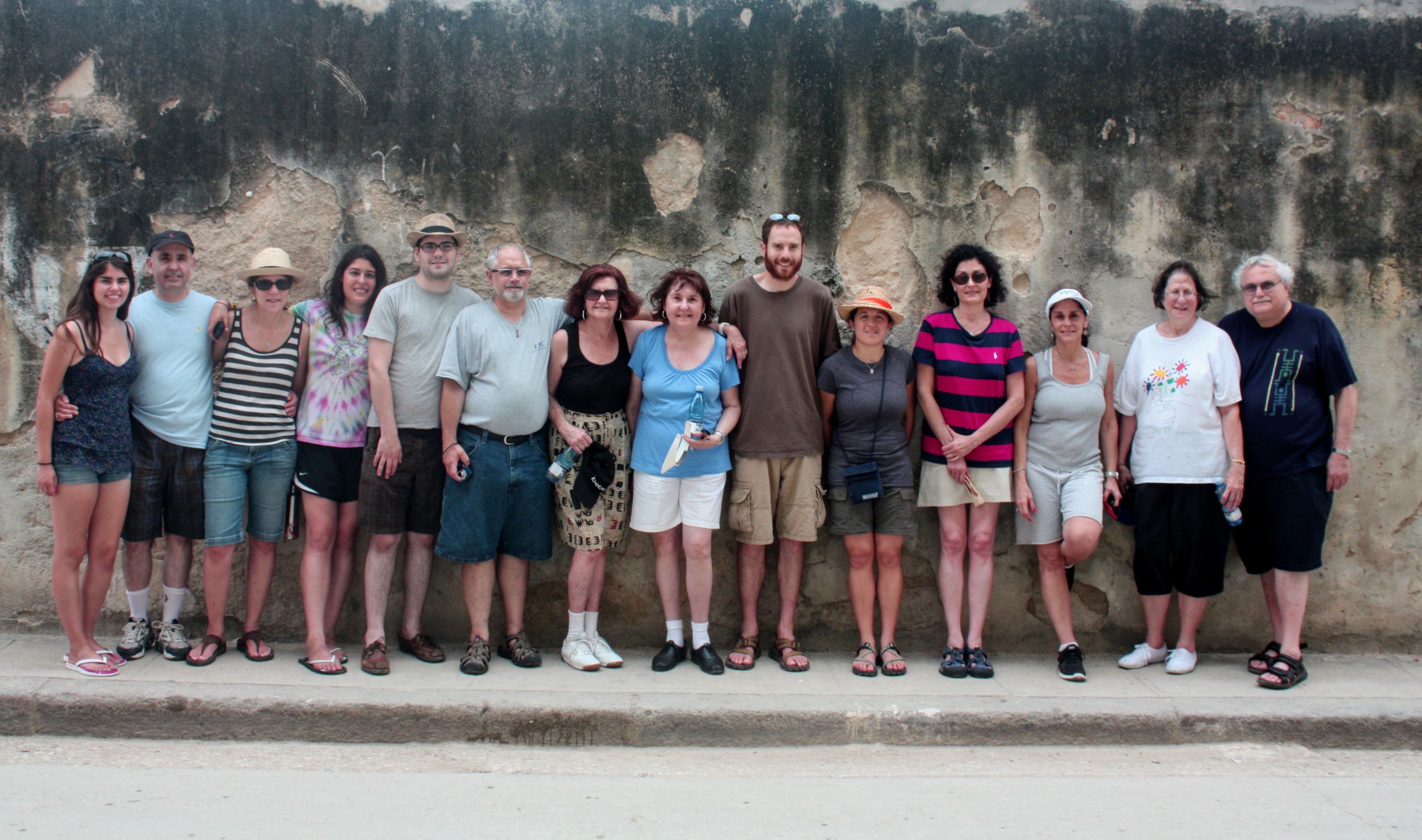
The upside of these restrictions was experiencing the resiliency of the local Jewish community. Previously a vibrant enclave of Jews who migrated from eastern Europe, Spain and other countries to flee anti-semitism and other hostilities, Havana was a stronghold of the diaspora when my mother was growing up. Her family came to Cuba from Poland in the mid 1920’s, around the same time my father’s parents emigrated from Hungary. Their families, like many others, were shut out of the United States due to unfavorable immigration policies as dark days descended on Europe. Remnants of this community can still be found around the island, albeit fragmented and much assimilated.
See photos of our Jewish roots
Most Cubans know little, we learned, if anything, about Judaism. There is no rabbi or cantor in the Havana area. The music, teachings and worship are taught by local Jews trained by two young adult educators sent to Cuba from Argentina. With the breakdown of the Soviet system in the late 1980s, religion became more acceptable. Each year since then, Americans, Canadians and others have visited to help their fellow Jews.
Our tour of the island began in Havana with a visit to Temple Beth Shalom of “El Patronato” at El Vedado, considered the headquarters of the Cuban Jewish community. We also visited Centro Sefaradi, Mitrani Senior Day Care and Adath Israel synagogue in Havana, before moving on to the cities of Trinidad, Santa Clara and Cienfuegos. In these provinces it became clear how interfaith marriages have impacted the lives and customs of this dwindling community.

One of the highlights of our trip is a visit to the Jewish cemetery, where my great grandfather, other family members and friends are buried. The gravesites are in disrepair, overgrown with weeds, some markers left illegible from the natural elements of heat, wind, rain and soot. Here we found our mission, to restore and clean the graves, was futile and bitter-sweet.
2. To experience life in a “time capsule”
Unlike many Cubans that strongly opposed the Castro regime and who support the ongoing embargo, my mother was eager to return to her childhood home. The enthusiasm she shared for her old stomping grounds, from the tenement apartments her family lived in, to the sites where her schools, playgrounds and bodegas once stood, was infectious. I had never seen my mother so animated!
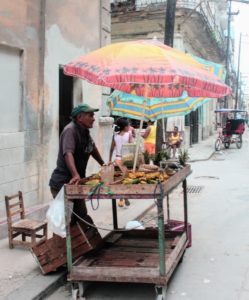
As we strolled the cobbled streets of Old Havana and took stock of the deteriorating buildings, we encountered a world frozen in time. Beyond the antique cars and colonial facades, were throwbacks everywhere: horse-drawn carriages, pedicabs, purposely stocked bodegas (with only eggs, only meats, or only household wares on display), vendors karting sodas, peanuts and fresh produce.
See my time capsule photos here
Visits to our family homes left us marveling at how little these had changed. My mother’s first apartment, a tiny space with only a living room and bedroom she shared with her sister and parents, had only been enlarged with a makeshift loft built by the young family who now occupies it. The family graciously welcomed our unannounced group as we took turns viewing the cramped rooms, proudly displaying the simple embellishments that had been made. The floor tiles were the same, but still no running water. My mother pointed out the communal bathrooms down the hall across the open atrium, or “solar”.
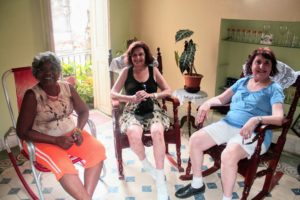
As a child my mother had bathed at her aunt’s (Isaac’s mother) house, until her family moved to an upgraded apartment, a railroad-style flat with a dedicated bathroom and small kitchenette. Here again we were warmly greeted when we arrived unannounced and asked to see the apartment. My mother and aunt contemplated the subtle changes as they sat in the living room on wooden rockers and reminisced with the current residents about “la Habana vieja”.
The most chilling experience came when we knocked on the door of Isaac’s childhood home. My great aunt and uncle were “wealthy” compared with my grandparents, and their family lived more generously, in a two-story home. Unlike my grandparents who left Cuba in 1949, Isaac’s family left in a hurry, reluctant exiles of the Castro regime. The furnishings were almost exactly as they had left them, sparking memories of lively family gatherings and Passover seders in the stylishly adorned dining and living areas.
3. To relive history
The city of Havana was the seventh village to be founded in Cuba by the Spanish conquerors in the early XVI century, and the third and definitive capital of the island. The city, originally called San Cristobal de La Habana, was founded on November 16th, 1519, and this year it will celebrate its 500th anniversary. If you’re lucky enough to to travel to Cuba during this special time in the nation’s history, it will be an unforgettable adventure.

The city’s recent history beckons visits to requisite sites like Plaza de la Revolucion, which features memorials to deceased members of the communist party, Che Guevara and Camilo Cienfuegos, juxtaposed by a nearby memorial to Jose Marti, Cuba’s literary hero. Stroll through storied neighborhoods of Vedado and Miramar for a glimpse of Havana’s more affluent past, or along the famed Paseo del Prado, dividing old and central Havana. Locals still gather on the 5-mile stretch of Malecon seawall for social evenings filled with rum, music and gossip. Visits to the favorite digs of Ernest Hemingway like El Floridita, or his home at Finca Vigía, conjur images immortalized in his classic Cuban tale The Old Man and the Sea.
We were fortunate enough to visit other national landmarks in Havana that may now be obscured (consult your tour operator) by the new travel restrictions: Hotel Nacional, renowned for its glamorous movie star and notorious mobster patrons; and Hotel Ambos Mundos, Hemingway’s first home in Cuba, where he partially penned To Whom the Bell Tolls.
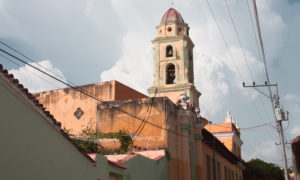
Beyond the capitol, the colonial town of Trinidad is a must-see, with its charming architecture and thriving art scene. One of the best-preserved cities in the Caribbean, UNESCO has designated Trinidad a World Heritage Site. History buffs may also enjoy stops at the Bay of Pigs and nearby Cienfuegos.
4. To meet the locals
The collective spirit of the Cuban people is contagious. Cubans tend to be louder, more expressive, and, perhaps, more aggressive when communicating than most of us may be accustomed to. This makes mixing with the locals all the more fun!
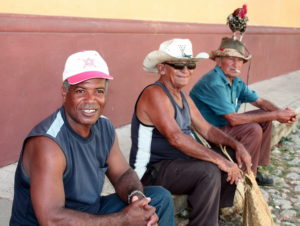
Wherever we traveled in Cuba, we were greeted with smiles, with genuine warmth and surprising compassion. In 2012 American tourists were still a novelty, yet we never felt that we were being hoodwinked into tourist traps or pestered with offers. Yes, we may have overpaid for some local trinkets, vendor nibbles or street art, but we were happy to contribute to the meager livelihoods of these gracious souls.
As we traveled throughout Cuba we also met congregants of the Jewish community who performed Israeli dances for us, and who shared their rituals, their sanctuaries and their homes. We learned of the history of the Jewish community, which had dwindled to fewer than 1,500 island-wide following the 1959 revolution, and spoke of their struggles. And they gratefully accepted our donations of old clothing, over-the-counter medications and everyday sundries.
5. To enjoy the music!
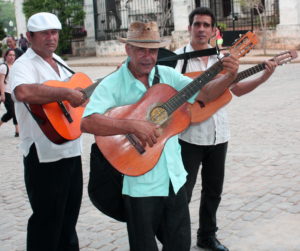
Mom and I recently watched the Netflix series, “Celia”, a loose interpretation of the life of Cuba’s biggest star, Celia Cruz. Celia’s celebrity epitomizes the dominant salsa beats most often associated with the island, yet there is so much more to be heard! Cuba’s cultural and religious influences from Catholicism and Santeria gave rise to popular rhythms like the timba, rumba, drum yuka, trova, jazz, mambo and other riffs. Spanish and African influences are indelible, embellished by inspirations of Asian and French immigrants, and seasoned with American, Jamaican and other Caribbean grooves.
In Havana, music is a lifeline. You can hear it everywhere. Walking through the streets. In bars and cafes. On the Malecon. In the markets and squares. Amateur musicians and ad hoc ensembles reveal a lust for life unmatched anywhere. If that’s not enough, the fabulous Tropicana nightclub is still going strong. I was so moved by the music, I actually took to the stage to dance with the troupe! Simultaneously sipping mojitos and smoking Cohibas, our group was further mesmerized by the sounds of the Buena Vista Social Club. Visits to Trinidad, Varadero, Cayo Santa Maria and Cienfuegos were similarly infused with the island’s hypnotic rhythms.
Ready to travel to Cuba?
Traveling to Cuba under the support for Cuban people program may not be for everyone. If you prefer sleeps at branded hotels vs. Airbnb or private residence stays, these new restrictions may deter you from traveling to Cuba. The new restrictions also raise uncertainties when trying to decipher “sanctioned” activities from approved ones.
If, however, you favor more authentic experiences, like dining in a local “cantina”, or seeing the sites through the eyes of a native, this new way to travel to Cuba may be more appealing than tendering into town from a cruise ship. The challenge lies in organizing the details of these experiences.
Keep it safe!
Rather than risk breaking the rules (the US government reserves the right to audit you at any point during the five years following your trip), I recommend working with a travel agent who can arrange legal encounters with a handful of travel companies that are licensed to conduct tours under the support for the Cuban people license. For more information on travel to Cuba under this category, see the Treasury Department’s guidelines here or contact me for a personalized quote.

